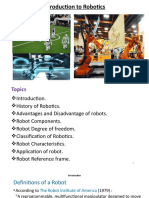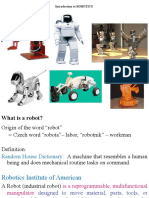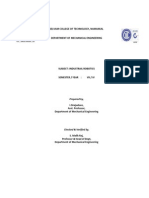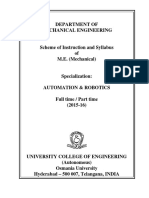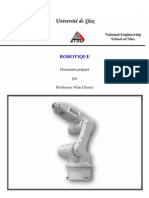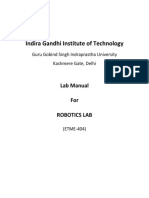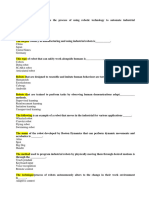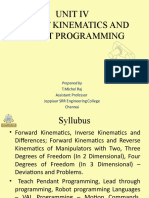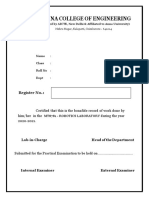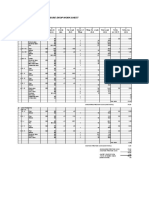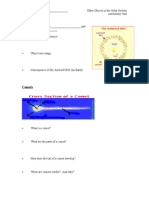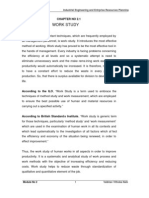100% found this document useful (2 votes)
1K views54 pagesIntroduction To Robotics
The document provides an overview of robotics and automation fundamentals. It discusses recommended textbooks and software, defines robotics and robots, covers the history and laws of robotics. It also classifies different robot types and describes the key components of a robot, including the manipulator, actuators, sensors, controller, end effectors and power sources. Examples of different sensors, actuators and robot components are also provided.
Uploaded by
Ejidokun TemitayoCopyright
© © All Rights Reserved
We take content rights seriously. If you suspect this is your content, claim it here.
Available Formats
Download as PPT, PDF, TXT or read online on Scribd
100% found this document useful (2 votes)
1K views54 pagesIntroduction To Robotics
The document provides an overview of robotics and automation fundamentals. It discusses recommended textbooks and software, defines robotics and robots, covers the history and laws of robotics. It also classifies different robot types and describes the key components of a robot, including the manipulator, actuators, sensors, controller, end effectors and power sources. Examples of different sensors, actuators and robot components are also provided.
Uploaded by
Ejidokun TemitayoCopyright
© © All Rights Reserved
We take content rights seriously. If you suspect this is your content, claim it here.
Available Formats
Download as PPT, PDF, TXT or read online on Scribd
/ 54


